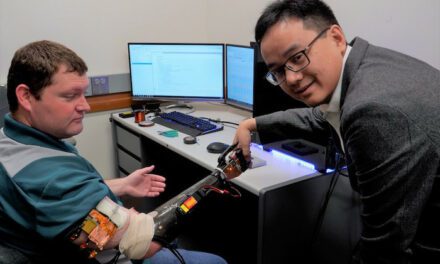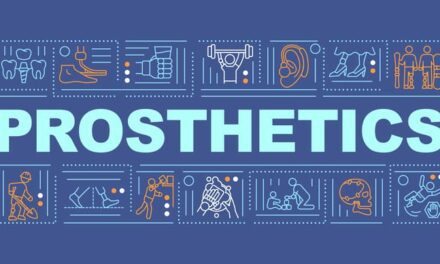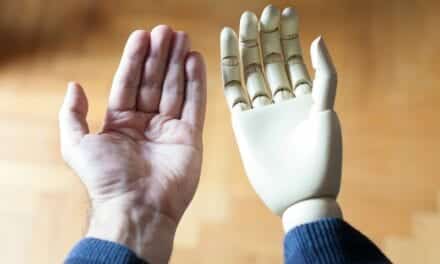by Christian Barrett PT, DPT
Many individuals experience heel pain at some point, whether caused by a new jogging routine, standing for long hours at work, or something undetermined. Pain may even occur first thing in the morning getting out of bed, and impact the ability to go to work, participate in recreational activities, or negatively impact overall mobility. The most common cause for heel pain is plantar fasciitis. And, despite that approximately 10% of all Americans have experienced heel pain, many are unsure of how to address it.
Plantar fasciitis is characterized by a sharp pain in the heel this is most severe with the first step following a period of inactivity. Also, the base of the heel is commonly tender to the touch. The exact etiology of plantar fasciitis is unknown and highly debated within the medical community. However, there are a few theories about the cause, including poor calf flexibility, muscular weakness, overtraining, obesity, or foot deformities such as high or low arches. It is important to note that all of these possible causes have a common characteristic. They all result in increased tensile loads and ultimately lead to micro tears in the plantar fascia that cause inflammation and pain. The goal of treatment is to reduce stress placed on the plantar fascia, which should result in decreased heel pain and improved overall function.
The best treatment for plantar fasciitis is preventing it from occurring in the first place. Proper footwear, stretching, and proper progression of workouts such as running can help reduce the risk of developing plantar fasciitis. Runners are one of the most common groups that develop plantar fasciitis, but they can reduce their risk of injury by having a specialist at a running store recommend the style of running shoe that is most compatible for their foot type. Also, limiting progression of distance when running to no more than 10% per week has been shown to reduce the risk of overuse injuries. However, sometimes proper footwear and training progression are not enough to prevent plantar fasciitis. In fact, external aids can be a quick and valuable way of treating plantar fasciitis, whether it is a chronic or acute case.
Orthotics Can Help
A quick and easy way to treat plantar fasciitis is to use orthotics to help support the longitudinal arch of the foot. However, orthotics can be cost prohibitive, especially if they’re not guaranteed to solve the issue. This is where a licensed physical therapist can help. In addition to creating a customized plan of care, a physical therapist can trial calcaneal taping, which should help reduce the stress placed on the plantar fascia. If this taping is effective, orthotics will most likely help reduce the heel pain and improve the overall function as a result. The physical therapist then can make recommendations about which orthotics will be the most effective.
Finding the correct orthotic can be challenging, as there are a multitude of options on the market, ranging from heel cups to ¾-length orthotics to full-length orthotics. In addition to the wide variety of orthotics, a decision needs to be made whether to seek out custom made or off-the-shelf orthotics. Custom orthotics can be costly, so trialing off-the-shelf orthotics may be a good option, with products commonly ranging from $25 to $75. Also, research shows that off-the-shelf orthotics can be equally or more effective as custom orthotics in treating plantar fasciitis.
Another factor to consider when finding appropriate orthotics is material. Orthotics range from soft to rigid, but when it comes to plantar fasciitis, the middle ground has been shown to be the most effective. Semi-rigid orthotics help support the arch without changing the mechanics of the foot. Rigid orthotics can provide too much control to the point that they drastically alter the mechanics of the foot and can cause other orthopedic issues to arise. Semi-rigid orthotics are a good compromise to control the velocity of the motion without completely restricting the natural motion of the foot. For example, if there is a gross amount of pronation upon weight acceptance, then it is more beneficial to control the velocity at which the foot pronates rather than stopping the pronation altogether.
Versatile and Safe
An added benefit of using orthotics as a treatment for plantar fasciitis is that they are appropriate for every population. Orthotics are just as effective at treating plantar fasciitis for elderly or inactive individuals as they are for treating high-level athletes. They are generally a low-risk intervention as they are unlikely to cause further injury. However, a common complaint with new orthotics is that they can feel uncomfortable after using them for a period of time. A good compromise is to develop a wearing schedule to gradually increase the amount of time spent wearing the orthotics over a period of a couple weeks. This can help with overall comfort, which will improve compliance with using the orthotics.
Overall, plantar fasciitis is a common source of heel pain and dysfunction for many people. A variety of treatment options exist, but few are as cost-effective and as successful as orthotics. Finding the correct orthotic for each foot type can prove to be a challenge but can be achieved through proper examination of the foot and research into available options on the market. RM
Christian Barrett, PT, DPT, is Lansdale Clinical Supervisor, The Physical Therapy & Wellness Institute, Lansdale, Pa. For more information, contact [email protected].
Pediatric Lower Extremity Immobilizers: Protection and Progress
by Frank Long, Editorial Director
Young children are known for high energy, curiosity, and a sense of self-control only just beginning to develop. They can also become fidgety in unfamiliar surroundings. Taking these characteristics together, environments where medical exams and treatment are performed can raise anxiety levels in children that create heightened activity in the arms and legs. To control such unwanted movement, or help facilitate stretching and therapeutic support for the lower extremities, limb immobilization can be helpful.
Focus on Fun, Comfort, Ease of Use
Applications of limb immobilization include sustained stretch, often applied by night splints, which can benefit children affected by cerebral palsy.1 Also known as “orthotic management in rest,” night splints are reported to be part of the general management of children affected by cerebral palsy.1 For sustained muscle stretch to be effective, it may be recommended for several hours a day.1 When night splinting is performed in the home, especially for several hours, it is important that both the child and caregiver accept the device being used. This, says Melinda Siwek, is one reason designing products specifically for pediatric use is important.
Siwek, founder and president of The Medi-Kid Co, Hemet, Calif, developed a line of immobilizers for the upper and lower extremities built to provide comfort, ease of use, and made in “kid friendly” fabric colors and patterns.
A Place in the PT Toolkit
“From a physical therapy perspective, there is a lot of application for the lower extremity immobilizer in night splinting. In addition, however, they can be used to support bones and muscles in the legs, and to brace legs in helping children with standing and walking,” Siwek adds.
Siwek understands the utility of the immobilizers from personal experience. She says her son was unable to stand up at an early age, and that his knees would buckle. That prompted her to create a set of lower extremity immobilizers to help him stand.
“Once he learned how to stand up he could take steps, and he would learn to walk,” Siwek says. “And, once he did that, then we could take them off of him because he could support his own weight,” she adds.
The immobilizers, Siwek explains, strive to make important improvements over what was available in the market when she introduced them 34 years ago. “Back in the day they would just use splints, and the problem with that is that they would just use Ace bandages. When you would put on Ace bandages it would cause the leg to swell, so you would have to take off the Ace bandage every 30 minutes so that a child’s legs could rest,” Siwek says.
Fitting the device requires only a few key measurements, Siwek explains: “You measure from the inside of the upper thigh to the ankle, and then around the thigh and around the ankle. From those three measurements a look at the guide on our website can determine which size will work best,” she says.
Reference
1. Maas JC, Dallmeijer AJ, Huijing, PA, Brunstrum-Hernandez J, van Kampen PJ, jaspers RT, Becher JG. Splint: the efficacy of orthotic management in rest to prevent equinus in childrens with cerebral palsy, an randomized controlled trial. BioMed Central Pediatrics. 2012;12(38). Retrieved from https://www.ncbi.nlm.nih.gov/pmc/articles/PMC3328267/. Accessed February 12, 2018.




